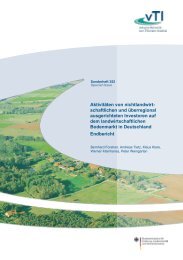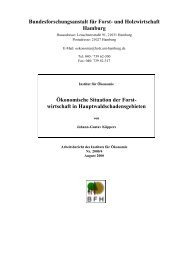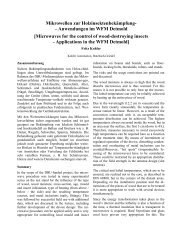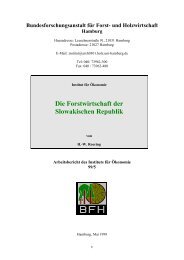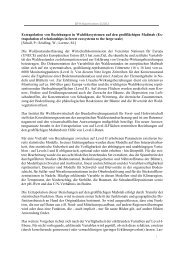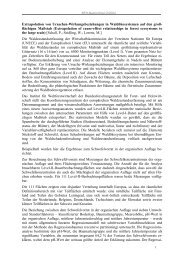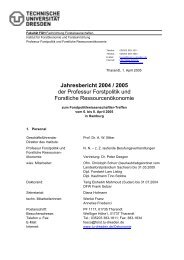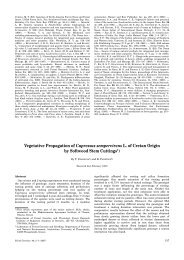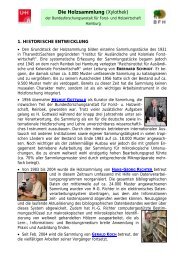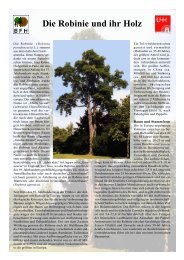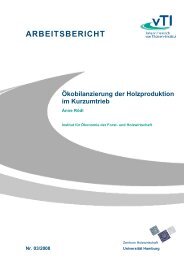STATE OF THE ART REVIEWS
STATE OF THE ART REVIEWS
STATE OF THE ART REVIEWS
You also want an ePaper? Increase the reach of your titles
YUMPU automatically turns print PDFs into web optimized ePapers that Google loves.
1. INTRODUCTION<br />
1.1 Wood production in Italy<br />
COST ACTION E22: Environmental optimisation of wood protection<br />
The Italian territorial surface is covered by 6.782.100 ha of forest and productive<br />
woodlands (data source: Istat 1995, Central Institute for Statistics). Italian forests have a<br />
prominent role in the protection of sensitive soils, the conservation of natural habitats<br />
and landscape enhancement, although they supply only 20% of the wood consumed in<br />
Italy. Hardwood species, (beech, oak and chestnut) are prevalent, covering approximately<br />
80% of woodlands, while conifers (pines, spruce and larch) are dominant on the<br />
alpine region only.<br />
Italy imports 5.300.000 m 3 of wood, mainly tropical hardwood from Asia and Africa<br />
and conifers from Germany, Austria, France and Eastern Europe. Although the Italian<br />
forest production is very limited, the Italian wood industry is highly developed. The<br />
wood sector is one of the strongest sectors of the Italian economy and traditionally adds<br />
positive figures to the national trade balance – importing raw materials and exporting<br />
wood final products – with 90.000 wood industries that employ 500.000 people (data<br />
source: Federlegno-Arredo, Italian Association of Wood and Furniture Industry).<br />
1.2 Use of treated wood in Italy<br />
In Italy treated wood is mainly used for the production of telecom poles, railway sleepers,<br />
street furniture, guard rails, noise protections barriers, palisades and fences in horticulture<br />
and landscaping. Its use as structural timber cannot be considered significant at a<br />
national level.<br />
At present in Italy there are 4 impregnating companies, using vacuum/pressure plants<br />
(Table 3) which currently meet the national demand for the production of telecom poles<br />
and railway sleepers. As for the other aforementioned products, there are an undetermined<br />
number of companies. The Italian demand for treated wood for these products is<br />
high, and it is therefore imported and then assembled in Italy.<br />
This data on Italy gives only a general outlook on the current situation of treated wood.<br />
The Italian treated wood industries have a such size that they escape statistical control.<br />
There is an Italian company that is developing a boron impregnation plant.<br />
Table 3: Impregnation of wood in Italy<br />
N° companies<br />
N° vacuum/<br />
pressure<br />
plants<br />
4 10<br />
production<br />
(to)<br />
40.000 pinus<br />
7.000 oak<br />
196<br />
species use preservatives<br />
Telecom<br />
poles<br />
Railways<br />
sleepers<br />
CS-X,<br />
CCA<br />
Creosote



